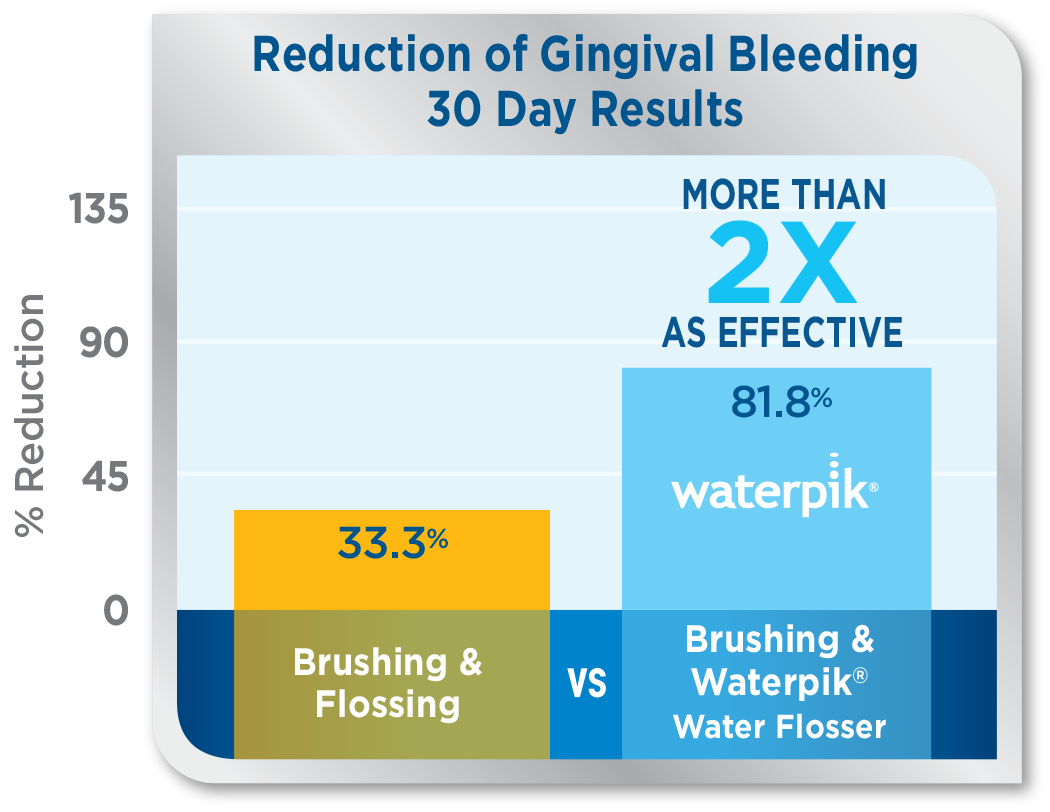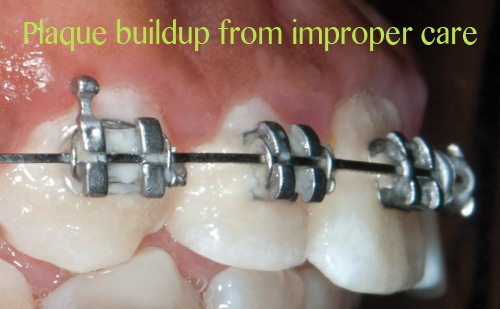5 Tips to Avoid White Spots on your Teeth after Braces
One of the most common questions we get at Saddle Creek Orthodontics is “How do I prevent white spots on my teeth once my braces come off?”
Before I answer that question, it’s first important to distinguish between white spots caused by braces and other white spots. White spots on the teeth can be caused by nutrition, genetics, or from excessive intake of fluoride (a condition called fluorosis). There is sometimes very little one can do to avoid these types of white spots. However, good oral hygiene and a healthy diet are the most predictable ways to avoid white spots.
Orthodontic white spot lesions (WSLs) appear as ‘little white cavities’ that can negatively impact the smile you’ve worked so hard to achieve with braces treatment. The spots are caused by plaque buildup on the teeth, which causes decalcification, or loss of hard minerals. Removing plaque from teeth is important because the bacteria in plaque produce an acid that begins to dissolve the mineralized surface of a tooth. While the risk of getting white spots is greater during braces, white spots can occur without orthodontic treatment in the absence of proper brushing and dental care. Once the spots appear, it is likely they will remain there, as they do not easily disappear and are not completely reversible.

Luckily, these white spots are 100% preventable with proper oral care. When you start orthodontic treatment here in our Memphis office, Dr. Fagala and our assistants will go over how to properly care for your teeth with braces. Learning the right technique for brushing, flossing and inspecting your braces is imperative to maintaining beautiful teeth for life.
[Also experiencing sensitive teeth? Check out our post on what causes sensitive teeth.]
We know how important having a perfect smile is, and through a combination of in-office and at-home steps, we can prevent white spots together.
- Keep Your Teeth Clean – Brushing a minimum of twice daily, and flossing daily prevents buildup between the teeth and brackets, where most plaque starts to form. Most children brush for an average of 30 seconds, fewer than 2 times a day. Ideally, a child wearing braces should brush 2 to 3 times a day, for 2 minutes each time. *Don’t forget your 6-month dental cleaning visit. We even recommend 3-month cleaning intervals for patients with poor oral hygiene.
- Seal Your Teeth – In addition to using fluoride-containing glue for bonding braces, our office also uses a product called Opal Seal. Opal Seal is a fluoride-containing sealant that covers the enamel and prevents white spots from forming on teeth.
- Use Extra Fluoride – Fluoride varnish can be used in-office to coat each tooth, protecting the teeth and rebuilding the enamel. Fluoride Varnish can be reapplied as needed throughout orthodontic treatment. We also always send home a fluoride rinse with the patient to use after brushing that helps keep teeth strong.
- Use an Electric Toothbrush – Using an electric toothbrush provides extra vibration which helps loosen plaque, making it easier to get your teeth clean. Some companies even make braces-specific toothbrush heads that can drastically improve the way you brush your teeth.
- Use a Water Flosser – Using a water flosser like Waterpik helps remove the plaque and debris between teeth and below the gumline, where it’s hard to reach with traditional brushing and flossing. Practically every orthodontic patient who has used a Waterpik comments on how much cleaner their teeth feel.

If during treatment we notice that a patient is not using proper oral care and white spots are starting to form, there are a few things in our office that we can do to help. We will offer additional training and counseling with both patients and parents on proper brushing techniques, or if we continue to see no improvement, we will remove the orthodontic wires completely and advise a routine of brushing three times a day and/or additional dental cleanings as necessary to prevent the white spots from growing. Lastly, a new technique called Icon resin infiltration will stop the progression of white spots and even improve the white spots to a certain degree.

We also use a reward system in our office that allows patients an incentive to properly maintain their braces. The system allows our patients to walk away with cool swag when they show continued care for their smile. Ultimately, there is no easy way to determine if you or your child will get white spots on your teeth after braces, but we do know that proper care and maintenance of your braces will lead to a beautiful, healthy smile.
Please leave a comment below with any questions you have about white spots, or any braces-related question and we’ll answer it in an upcoming post!
